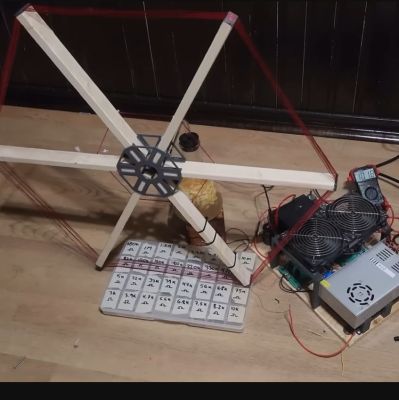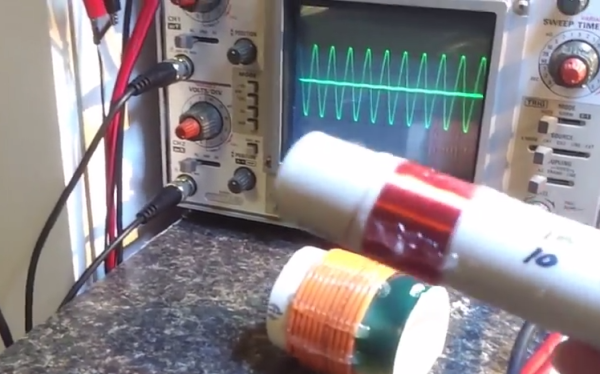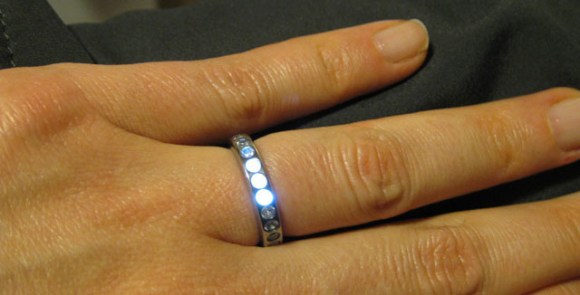
Everyone loves wireless power these days, almost vindicating [Nikola Tesla’s] push for wireless power. One reason why transmitting electricity this way is a terrible idea is the massive losses involved once you increase the distance between transmitter and receiver. That said, there are ways to optimize wireless power transfer using inductive coupling, as [Hyperspace Pirate] demonstrates in a recent video.
Starting with small-scale proof of concept coils, the final version of the transmitter is powered off 120 VAC. The system has 10 kV on the coil and uses a half-bridge driver to oscillate at 145 kHz. The receiver matches this frequency precisely for optimal efficiency. The transmitting antenna is a 4.6-meter hexagon with eight turns of 14 AWG wire. During tests, a receiver of similar size could light an LED at a distance of 40 meters with an open circuit voltage of 2.6 V.
Although it’s also an excellent example of why air core transformers like this are lousy for efficient remote power transfer, a fascinating finding is that intermediate (unpowered) coils between the transmitter and receiver can help to boost the range due to coupling effects. Even if it’s not a practical technology (sorry, [Tesla]), it’s undeniable that it makes for a great science demonstration.
Of course, people do charge phones wirelessly. It works, but it trades efficiency for convenience. Modern attempts at beaming power around seem to focus more on microwaves or lasers.
Continue reading “Transmitting Wireless Power Over Longer Distances”



![The nearly final measurement by [Double M Innovations].](https://hackaday.com/wp-content/uploads/2024/01/hv_transmission_line_energy_harvesting_final_count.jpg?w=400)













